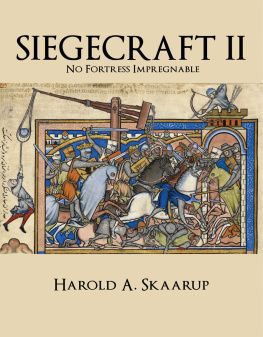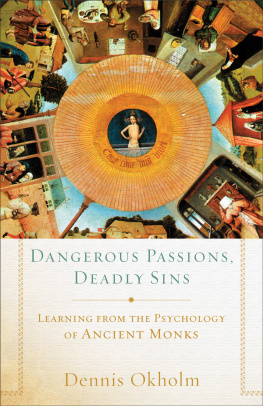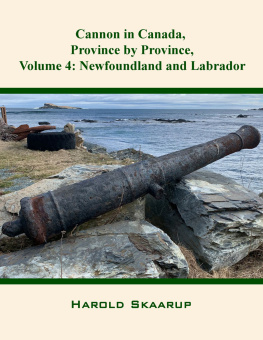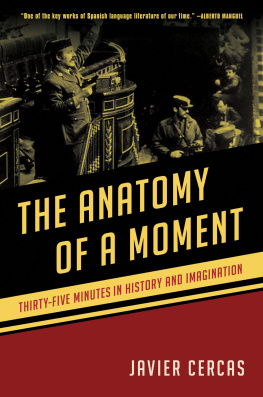ANATOMY AND ANATOMISTS IN EARLY MODERN SPAIN
The History of Medicine in Context
Series Editors: Andrew Cunningham and Ole Peter Grell
Department of History and Philosophy of Science
University of Cambridge
Department of History
Open University
Titles in the series include
The Fate of Anatomical Collections
Rina Knoeff and Robert Zwijnenberg
Sudden Death: Medicine and Religion in Eighteenth-Century Rome
Maria Pia Donato
Suzanne Nol: Cosmetic Surgery, Feminism and Beauty in
Early Twentieth-Century France
Paula J. Martin
Wounds in the Middle Ages
Edited by Anne Kirkham and Cordelia Warr
The One-Sex Body on Trial: The Classical and Early Modern Evidence
Helen King
Anatomy and Anatomists in Early Modern Spain
BJRN OKHOLM SKAARUP
First published 2015 by Ashgate Publishing
Published 2016 by Routledge
2 Park Square, Milton Park, Abingdon, Oxon OX14 4RN
711 Third Avenue, New York, NY 10017, USA
Routledge is an imprint of the Taylor & Francis Group, an informa business
Copyright Bjrn Okholm Skaarup 2015
Bjrn Okholm Skaarup has asserted his right under the Copyright, Designs and Patents Act, 1988, to be identified as the author of this work.
All rights reserved. No part of this book may be reprinted or reproduced or utilised in any form or by any electronic, mechanical, or other means, now known or hereafter invented, including photocopying and recording, or in any information storage or retrieval system, without permission in writing from the publishers.
Notice:
Product or corporate names may be trademarks or registered trademarks, and are used only for identification and explanation without intent to infringe.
British Library Cataloguing in Publication Data
A catalogue record for this book is available from the British Library
The Library of Congress has cataloged the printed edition as follows:
Skaarup, Bjxrn Okholm, author.
Anatomy and anatomists in early modern Spain / by Bjxrn Okholm Skaarup Ashgate.
p. ; cm. (History of medicine in context)
Includes bibliographical references and index.
ISBN 978-1-4724-4826-2 (hardcover) ISBN 978-1-3155-6697-9 (ebook) ISBN 978-1-3171-8141-5 (epub)
I. Title. II. Series: History of medicine in context.
[DNLM: 1. AnatomyhistorySpain. 2. AnatomistshistorySpain. 3. AnatomyeducationSpain. 4. History, 16th CenturySpain. QS 11 GS6]
QM11
611.00946dc23
2014026174
ISBN 9781472448262 (hbk)
ISBN 9781315566979 (ebk-PDF)
ISBN 9781317181415 (ebk-ePUB)
To my gorgeous wife, best friend, colleague, (and fellow Ashgate author),
Joanna Milstein
Contents
List of Figures
Acknowledgements
I wish to thank everyone who has contributed to this work. Many thanks go to my supervisor, Professor Antonella Romano (European University Institute), who provided guidance and advice during the development of this project. Thanks also go to the jury and examining board of my doctoral thesis, Professor Andrea Carlino (Institut dHistoire de la Mdicine et de la Sant, Geneva), Professor Rafael Mandressi (Centre Alexandre-Koyr, Paris) and Professor Bartolom Yun-Casalilla (European University Institute). A large number of Spanish scholars, universities, libraries and archives have been consulted during the writing of this monograph, and have been extremely helpful. I would especially like to thank Professor Jos Pardo Toms (CSIC, Barcelona) and Professor lvar Martnez-Vidal (IHMC, Valencia), whose scholarship on Spanish anatomy theatres first opened my eyes to the exciting topic of Spanish Renaissance anatomy and who have offered friendly assistance ever since. Thanks also to Professor Victor Navarro-Brotns and Professor Jos Luis Fresquet Febrer (IHMC, Valencia), Professor Anastasio Rojo Vega, (University of Valladolid), Professor Fernando Bouza (Universidad Complutense de Madrid), and Dr Asuncin Fernndez (University of Zaragoza). I am furthermore indebted to Professor Cynthia Klestinec, (Miami University, Ohio) for generously sharing her knowledge of Renaissance anatomy and surgery with me and to Professor Michele L. Clouse (Ohio University) for her contributions to the study of sixteenth-century Spanish medical history. I would like to acknowledge Niels Lynnerup, Professor of Forensic Anthropology, for many years of anatomical training used in our joint attempts to reconstruct the faces of the past, and Jrgen Tranum-Jensen, Professor of Anatomy (Panuminstituttet, University of Copenhagen), for allowing me to access original textbooks from the anatomical institute library. Thanks also to my father, Dr Jrgen Skaarup, my wife, Dr Joanna Milstein, Dr Gojko Barjamovic (Harvard University), Dr Ivan Boserup (Royal Library, Copenhagen), Professor Ian Maclean (University of Oxford) and Professor Pamela H. Smith (Columbia University) for reading through one or more chapters of the text. Dr Alessio Assonitis and Dr Sheila Barker from the Medici Archive Project in Florence have provided many useful elucidations. For financial support during my doctoral and postdoctoral studies at the EUI, the Warburg Institute and Columbia University, I would like to thank the Danish Rectors Conference and The Carlsberg Foundation. I also wish to thank Lucy Morris for thoroughly editing the text. Finally, I am grateful to Tom Gray, Emily Yates, Katie McDonald, Jon Lloyd, Matthew Irving and the series editors of The History of Medicine in Context at Ashgate for facilitating the publication of this monograph. Thanks at last to my parents Jrgen Skaarup and Lulu Okholm (and my sister Grith Okholm Skaarup) for a lifelong encouragement of my interests in history and the arts.
Chapter 1
Early Modern Spanish Anatomy and La polmica de la ciencia espaola
Paradoxically, studies of early modern Iberian science have only been carried out coherently and collaboratively during the last few decades, even though fierce debates on the subject have dominated Spanish historiography for more than two centuries. Since the late 1700s, Spain has been the stage of an often bitter controversy known as la polmica de la ciencia espaola. The polemic has been played out between criticos, lamenting the absence of Spanish contributions to modernity, and apologistas, presenting Spain as a leader rather than a failure in the intellectual and scientific history of Europe. The former have mourned the role of the Inquisition, censorship, and religious orthodoxy, and the intellectual isolation of early modern Spain cemented by Philip IIs 1559 decree, which prohibited Spanish students and scholars from teaching and studying abroad. According to these critics, the mid-sixteenth century represented the opening stage of subsequent centuries of cultural and intellectual backwardness, and their conclusions often advocated the needs of radical and immediate reforms of Spanish society. In strong opposition to this pessimist view, the apologists, regularly referred to by their counterparts as nationalistas or triunfilistas, have presented the period in question as a golden century (Siglo de Oro










